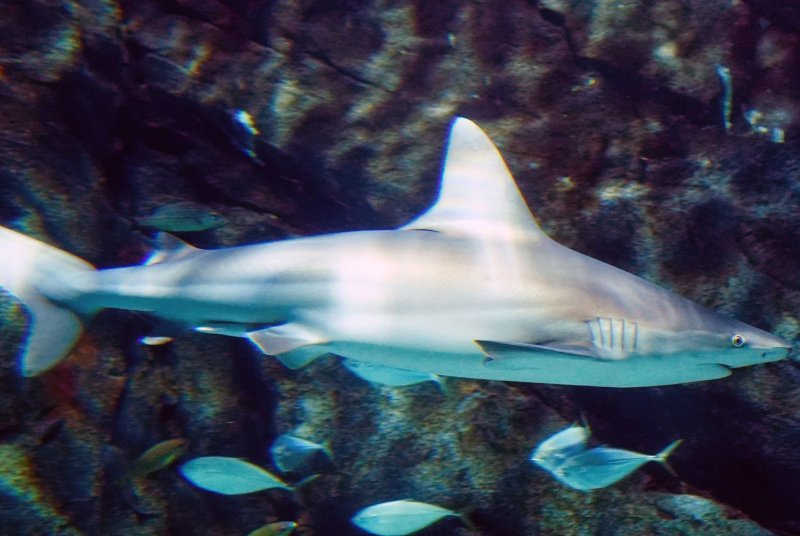Sharks were among 44% of migratory species that signatories to a United Nations treaty are pledged to protect that are in decline or in danger of extinction, according to a U.N report out Monday. File Photo by Bill Greenblatt/UPI |
License Photo
Feb. 12 (UPI) -- Nearly half of the more than 1,100 migratory species that signatories to a United Nations treaty are pledged to protect are in decline and one in five may become extinct, the U.N. Environment Program said Monday.
The first State of the World's Migratory Species report blames hunting, fishing and farming and loss of habitat for population declines in 44% of Convention on Migratory Species-listed species and pushing 22% of them to the edge of extinction, UNEP said in a news release.
Another 399 species not covered by CMS are threatened with extinction, or soon will be.
Negative impacts from human-made pollution on food chains and early evidence that climate is beginning to affect migration paths and cycles are also implicated.
The steppe eagle, Egyptian vulture and the wild camel head up a list of 70 species that have become more endangered since the mid-1990s.
That compares with only 14 species that have seen improved conservation futures such as blue and humpback whales, the white-tailed sea eagle and the black-faced spoonbill.
Just 3% of CMS fish species are deemed at no to low risk of extinction, with migratory sharks, rays and sturgeons at highest risk with their populations down 90% in the past 50 years.
U.N. Under-Secretary-General and UNEP Executive Director Inger Andersen called for urgent action.
"Today's report sets out the evidence that unsustainable human activities are jeopardizing the future of migratory species -- creatures who not only act as indicators of environmental change but play an integral role in maintaining the function and resilience of our planet's complex ecosystems," Andersen said.
"The global community has an opportunity to translate this latest science of the pressures facing migratory species into concrete conservation action. Given the precarious situation of many of these animals, we cannot afford to delay and must work together to make the recommendations a reality."
Recommendations include stronger and more widespread tackling of illegal and unsustainable taking of migratory species, including unintended capture of non-target species, greater efforts to identify, protect, connect and effectively manage key migratory species sites and taking urgent action to safeguard species at highest risk of extinction.
The report also calls for a scaling up of efforts to combat profound impacts from climate change, pollution -- light, noise, chemical, plastic -- and invasive species, as well as expanding CMS to more at-risk migratory species to raise national and international awareness.
Three out of four CMS-listed species are impacted by habitat loss, degradation and fragmentation from agriculture and transport and energy infrastructure growth and 70% are impacted by overexploitation.
Andersen said international cooperation needed to go beyond the government level mandated by CMS to include action across the private sector and other actors, given the threats migratory species faced were global drivers of environmental change that affect biodiversity loss, as well as climate change.
Mapping and taking adequate steps to protect 5,000 of 10,000 vital breeding, feeding and stopover sites for migratory species not currently designated as protected or conserved areas should be a key priority, the report states.
"Migratory species rely on a variety of specific habitats at different times in their life cycles. They regularly travel, sometimes thousands of miles, to reach these places," CMS Executive Secretary Amy Fraenkel said.
"They face enormous challenges and threats along the way, as well at their destinations where they breed or feed.
"When species cross national borders, their survival depends on the efforts of all countries in which they are found. This landmark report will help underpin much-needed policy actions to ensure that migratory species continue to thrive around the world," she said.















